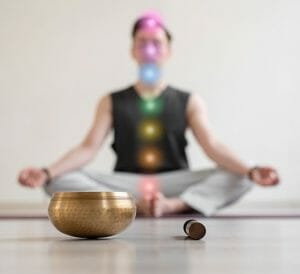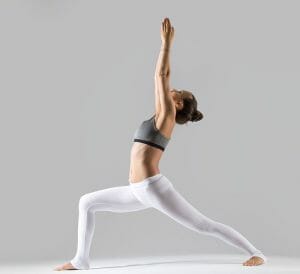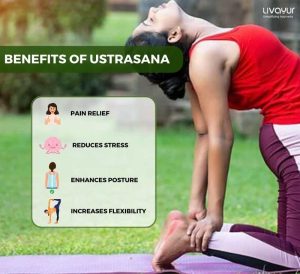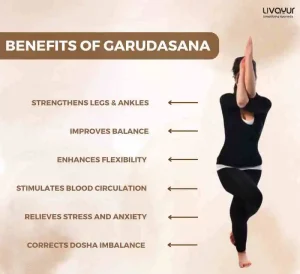
Dhanurasana or Bow Pose, is a popular yoga asana that offers numerous physical and mental benefits. Derived from the Sanskrit words “dhanur” (meaning “bow”) and “asana” (meaning “pose”), this pose resembles the shape of a bow when performed correctly. In this blog post, we will explore the benefits of Dhanurasana and provide a step-by-step guide on how to perform it.
Benefits of Dhanurasana
Strengthens the Back and Abdominal Muscles

Dhanurasana primarily targets the back muscles like the erector spinae, latissimus dorsi, and rhomboids. It helps in shaping and strengthening these muscles, for a healthy and pain-free back. This pose also engages the abdominal muscles to improve core strength and stability. [1]
Enhances Agni (Digestive Fire)
Dhanurasana can help in stimulating the digestive system, increase circulation to the abdominal organs, and massage the digestive tract. These things help ignite Agni(digestive fire) leading to improved digestion, elimination of toxins, and enhanced metabolism. [2]
Balances Vata Dosha
Vata dosha is responsible for movement and governs the nervous system. Dhanurasana helps to ground and stabilise Vata dosha, reducing anxiety, restlessness, and nervousness. It promotes a sense of stability and calmness in both the body and mind. [3]
Enhances Spinal Flexibility
Practising Dhanurasana helps in stretching the entire length of the spine, improving flexibility and promoting better posture. With regular practice of this yoga asana, one can prevent backaches and reduce the risk of spinal disorders. [1] [4]
Stimulates the Digestive System

Dhanurasana involves compression of the abdomen, which stimulates the digestive organs. It aids in the optimal functioning of the digestive system, relieves constipation, and promotes a healthy metabolism. [1]
Opens the Chest and Shoulders
As you lift your chest and pull your legs back, Dhanurasana opens up the chest and stretches the front of the body, including the shoulders. This posture can help counteract the hunched-over position many people experience due to prolonged sitting and desk work.
Relieves Stress and Fatigue
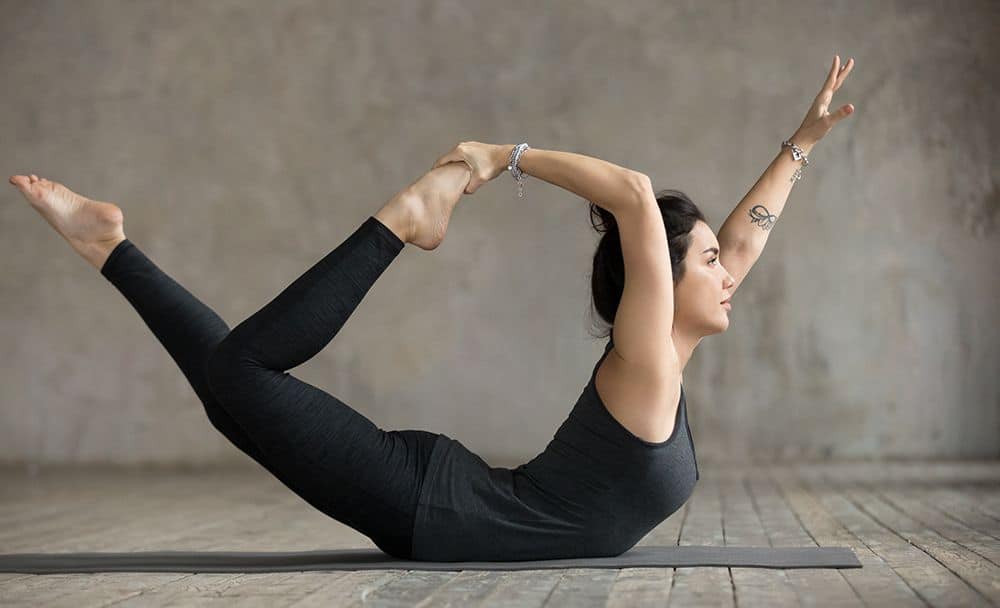
Like most yoga poses, Dhanurasana helps release tension and reduce stress. The deep stretch involved in this asana stimulates the nervous system and encourages relaxation, relieving mental and physical fatigue. [5]
How to Perform Dhanurasana
- Starting Position
Lie flat on your stomach with your legs straight and your arms placed alongside your body. Take a moment to relax and breathe deeply.
- Bend Your Knees and Reach Back
Bend your knees and reach back with your arms, aiming to grab your ankles or feet. Ensure that your knees are hip-width apart for stability.
- Lift Your Chest and Kick Back
Inhale deeply as you lift your chest off the ground. At the same time, kick your legs backwards, creating a bow shape with your body. Maintain a relaxed facial expression and continue breathing evenly.
- Rock Back and Forth
Gently rock back and forth while maintaining balance on your abdomen. This rocking motion provides a gentle massage to your digestive organs.
- Hold the Pose
Hold the pose for 20 to 30 seconds initially. Gradually increase the duration to 60 seconds or more as you become more comfortable. Remember to breathe steadily throughout the practice.
- Release and Return
Exhale and slowly release your ankles or feet. Lower your chest and legs to the ground, returning to the starting position.
Precautions and Modifications
- Avoid practising Dhanurasana if you have a recent abdominal surgery, hernia, or back injury.
- If you find it challenging to reach your ankles or feet, you can use a strap looped around your ankles and hold onto the strap with your hands.
- For beginners, it is recommended to practise under the guidance of a qualified yoga teacher to ensure correct alignment and avoid any potential injuries.
FAQs
1. Can Dhanurasana help with weight loss?
Dhanurasna engages multiple muscle groups and increases metabolic activity which can aid in weight loss. That said, weight loss is a holistic process and requires a balanced diet, regular exercise, and a healthy lifestyle overall.
2. Can Dhanurasana help with menstrual discomfort?
Dhanurasana can provide relief from menstrual discomfort by stimulating blood flow to the pelvic region and reducing cramps. However, it is advisable to listen to your body and avoid practising this pose during heavy flow or when it causes any discomfort.
3. Is Dhanurasana suitable for people with high blood pressure?
Individuals with high blood pressure should approach Dhanurasana with caution. This pose involves intense stretching and can temporarily increase blood pressure. It is best to consult with a healthcare professional or yoga instructor to determine if this pose is suitable or if modifications are needed.
4. Can Dhanurasana help with respiratory conditions like asthma?
Dhanurasana can be beneficial for respiratory health as it expands the chest and improves lung capacity. However, individuals with respiratory conditions should practise under the guidance of a qualified instructor and avoid overexertion. Consult with a healthcare professional to assess the suitability of this pose for your specific condition.
5. Is Dhanurasana safe for individuals with neck or shoulder injuries?
Dhanurasana involves arching the back and lifting the chest, which may put some strain on the neck and shoulders. If you have a neck or shoulder injury, it is advisable to avoid or modify this pose to prevent further discomfort or injury. Consult with a healthcare professional or yoga instructor for appropriate modifications.
Conclusion
Dhanurasana (Bow Pose) offers a myriad of benefits for the mind and body. Regular practice can help strengthen your back, improve flexibility, stimulate digestion, and promote relaxation. It is however essential to perform this yoga asana slowly and with caution to avoid unwanted discomfort or injuries.
Disclaimer: This Article is for informative purposes only and does not constitute medical advice. Kindly contact a medical professional before attempting any treatments mentioned in the article yourself.
References:
- Importance Of Dhanurasana In Day To Day Life – Dr. Jyoti Gangwal(jvwu.in)
- The impact of manipura chakra (solar plexus chakra), agni (digestive fire) and pachaka pitta (food digestive fire) in treating diabetes mellitus | International journal of health sciences (sciencescholar.us)
- In Geriatrics the Role of Yoga in Gastro-Intestinal Disorders Related to Constipation Vibandha (researchgate.net)
- Effects of hatha yoga exercises on spine flexibility in women over 50 years old – PMC (nih.gov)
- Reviewing the benefits of yoga as an approach of indigenous psychology during the covid-19 pandemic Goswami Rupashree(indianjournals.com)














